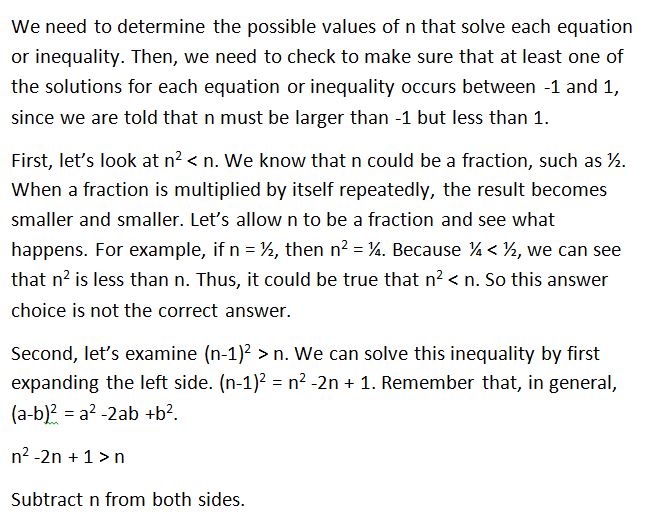All SAT Math Resources
Example Questions
Example Question #3 : How To Find The Solution To An Inequality With Addition
Solve for 
We want to isolate the variable on one side and numbers on another side. Treat like a normal equation.


Example Question #4 : How To Find The Solution To An Inequality With Addition
Solve for 
We want to isolate the variable on one side and numbers on another side. Treat like a normal equation.







Since we have the 

Example Question #141 : Equations / Inequalities
Solve for 
We want to isolate the variable on one side and numbers on another side. Treat like a normal equation.




















Final answer is just 
Example Question #796 : Psat Mathematics
If 


To solve this problem, add the two equations together:
The only answer choice that satisfies this equation is 0, because 0 is less than 4.
Example Question #23 : Inequalities
Solve for 
We want to isolate the variable on one side and numbers on another side. Treat like a normal equation.




Example Question #24 : Inequalities
Solve for 
We want to isolate the variable on one side and numbers on another side. Treat like a normal equation.


















Final answer is just 
Example Question #798 : Psat Mathematics
If –1 < n < 1, all of the following could be true EXCEPT:
n2 < n
n2 < 2n
(n-1)2 > n
|n2 - 1| > 1
16n2 - 1 = 0
|n2 - 1| > 1
Example Question #15 : Inequalities
(√(8) / -x ) < 2. Which of the following values could be x?
All of the answers choices are valid.
-4
-2
-1
-3
-1
The equation simplifies to x > -1.41. -1 is the answer.
Example Question #52 : New Sat Math Calculator
Solve for x
Example Question #16 : Inequalities
We have 
All SAT Math Resources



































































